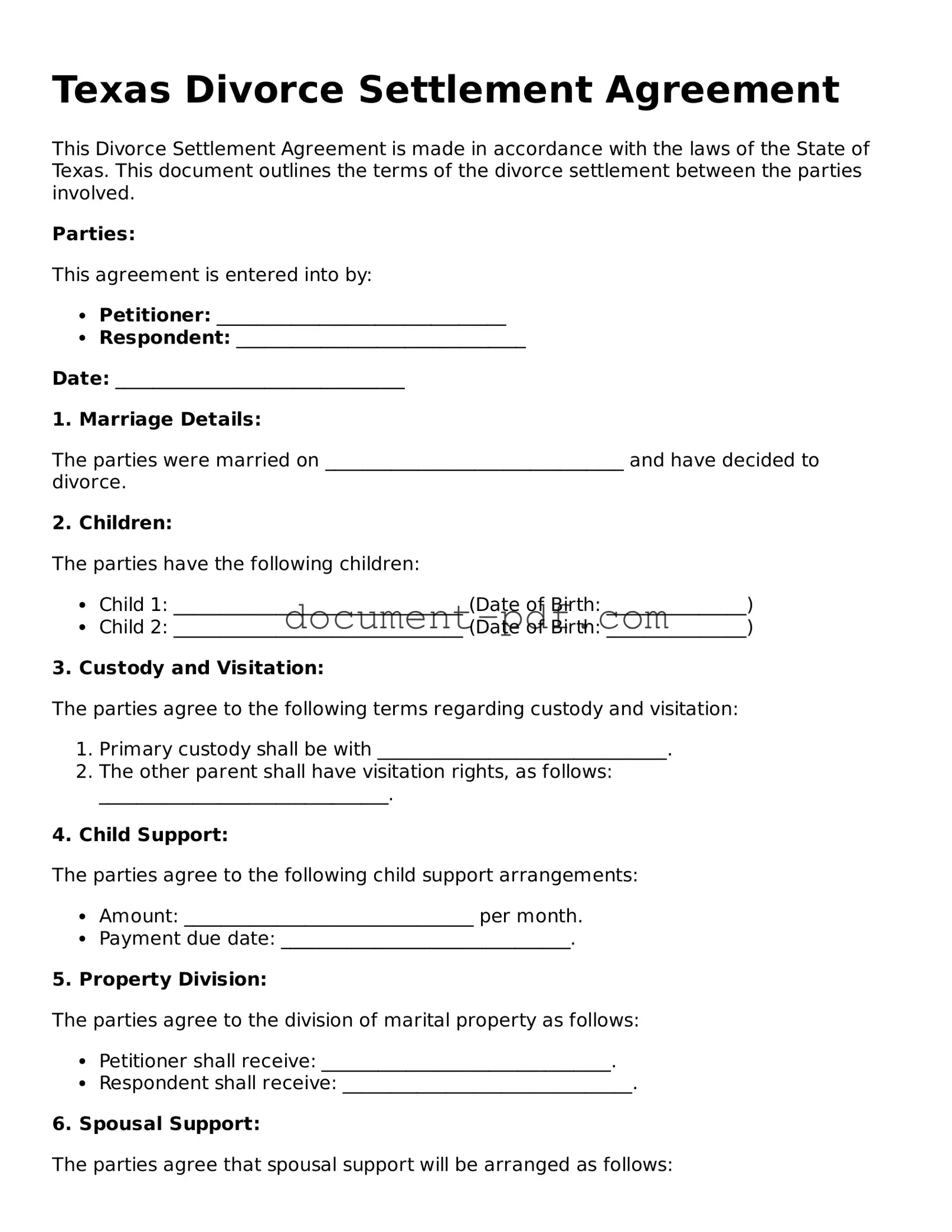Texas Divorce Settlement Agreement
This Divorce Settlement Agreement is made in accordance with the laws of the State of Texas. This document outlines the terms of the divorce settlement between the parties involved.
Parties:
This agreement is entered into by:
- Petitioner: _______________________________
- Respondent: _______________________________
Date: _______________________________
1. Marriage Details:
The parties were married on ________________________________ and have decided to divorce.
2. Children:
The parties have the following children:
- Child 1: _______________________________ (Date of Birth: _______________)
- Child 2: _______________________________ (Date of Birth: _______________)
3. Custody and Visitation:
The parties agree to the following terms regarding custody and visitation:
- Primary custody shall be with _______________________________.
- The other parent shall have visitation rights, as follows: _______________________________.
4. Child Support:
The parties agree to the following child support arrangements:
- Amount: _______________________________ per month.
- Payment due date: _______________________________.
5. Property Division:
The parties agree to the division of marital property as follows:
- Petitioner shall receive: _______________________________.
- Respondent shall receive: _______________________________.
6. Spousal Support:
The parties agree that spousal support will be arranged as follows:
- Amount: _______________________________ per month.
- Duration: _______________________________.
7. Debts:
The following debts will be the responsibility of each party:
- Petitioner shall be responsible for: _______________________________.
- Respondent shall be responsible for: _______________________________.
8. Miscellaneous Provisions:
Any additional agreements between the parties may include:
______________________________________________________________________________
Signatures:
Both parties acknowledge that they have read and understood this agreement. By signing below, the parties agree to be bound by its terms.
Petitioner: _______________________________ Date: ________________
Respondent: _______________________________ Date: ________________
This agreement is a reflection of the mutual understanding and intent of both parties.
